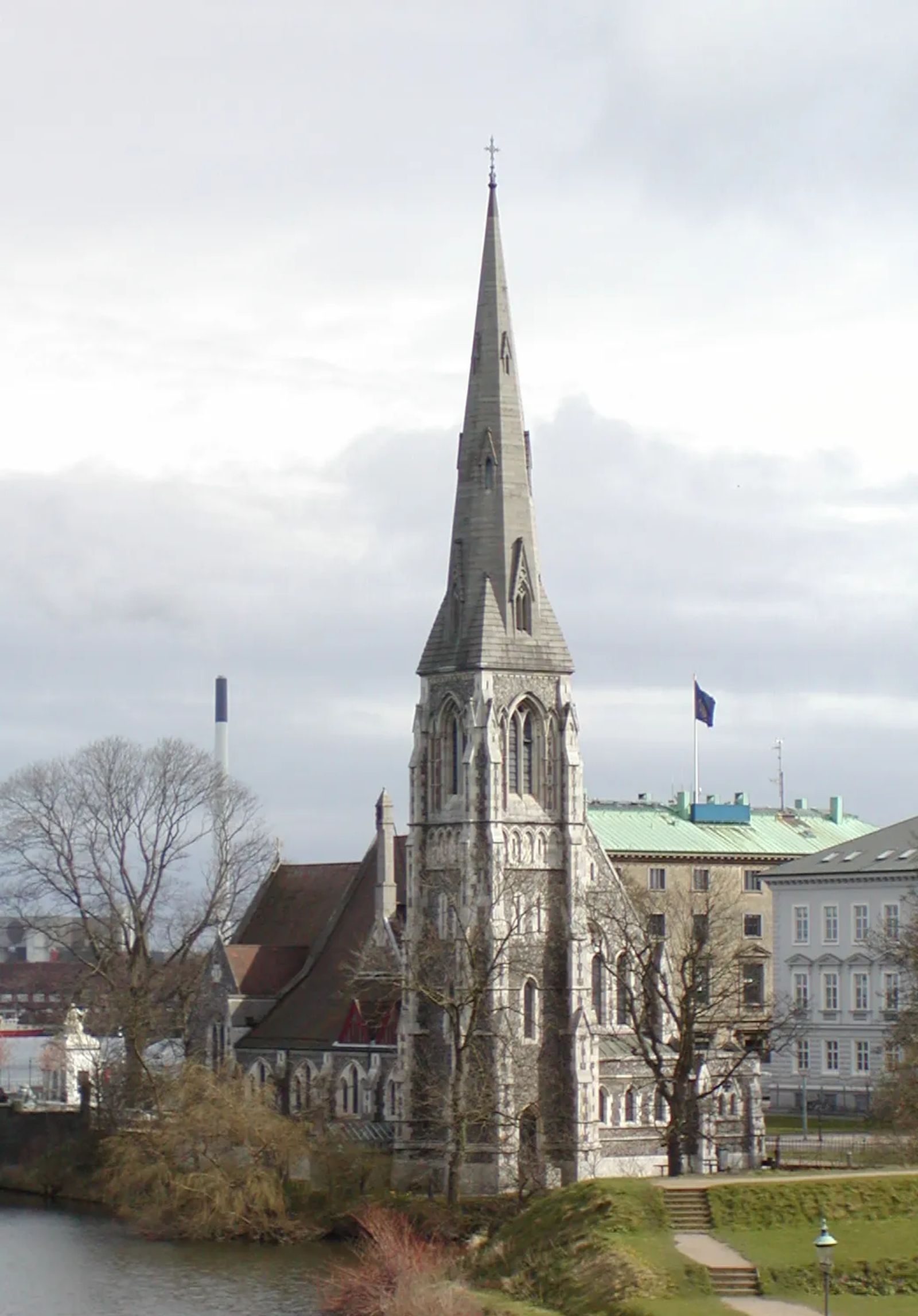
Weekly Gem #104 A cause of many pauses
Published 2/4/2017
Location: This 'hidden gem' is located at 11 Churchillparken, in Copenhagen, Denmark (see Clue Me! Map). The St. Alban's Church has an interesting effect on passersby. They're walking to see the Kastellet or Langelinie Park, or to catch a ferry. Then they see St. Alban's, and will often stop in mid-stride to look. It's amazing how an artistic designer used two shades of grey, threw in some carefully placed lines and contrast, and created such an arresting building.
Upon closer inspection the dark grey blocks jump out at you. You can see (from up close) that they aren't blocks at all, but rather are made of clusters of smaller stones cemented together. These dark stones are flint. When you strike flint at a certain angle, flint chips are removed. This process, called knapping, was used to flatten and shape the thousands of flint stones that were used to decorate St. Alban's walls. The dark color of the flint against the nearly white limestone blocks creates the striking contrast that causes so many pauses.
.........
Here's the original hidden gem entry from our Clue Me! map.
Clue
A Striking Church
Description
The St. Alban's Church, also known as the English Church
Why It's Interesting
This church was built for English people, and English speakers, to worship while in Copenhagen. The architecture included many styles and materials of, and from, England. For example, the dark flint was all brought over from England. The striking contrast in color is created in part by using knapped flint (the darker stone), a material that has been used for stone buildings in England for centuries. To 'knap' flint, you 'strike' the stone to remove small parts, like making arrowheads, but instead forming a flat side and shaping the stone as desired.







